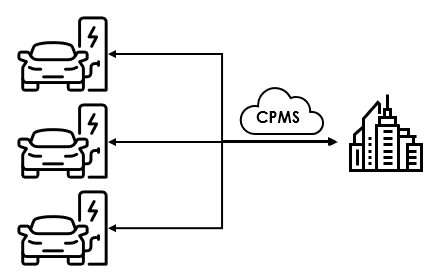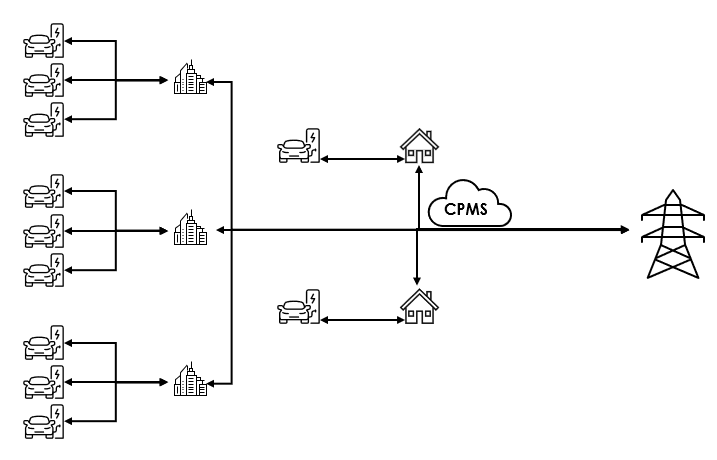With EV adoption charging ahead, everybody who is getting on board the electric revolution is already accustomed to the idea that EVs need to be charged. A whole EV charging industry has grown up around that need. But like internal combustion engine (ICE) vehicles, most EVs are parked 95% of the time, and much of that time, they’re connected to charging stations. If we don’t use the energy stored in the batteries of those vehicles, we’re missing out on a huge opportunity. This is the premise of bi-directional EV charging and is Driivz’s vision of revitalizing the planet by turning EVs into battery storage on wheels.
While front-runners in EV adoption, such as Norway, show high adoption rates, worldwide, the EV revolution is still in its early-adopter phase with global EV sales comprising 15.8% of the market in 2023. Accordingly, while early experiments with bidirectional charging date back to 2007, it’s still in its infancy.
Bidirectional charging enables various use cases collectively known as V2X (vehicle to everything). Let’s break those down and see their practical applications.

V2H – Vehicle to Home: Powering your home with your car
There are two ways you can benefit fromV2H. One is during power outages in which the battery in your EV could power your home for up to three days. The other way is to use your car on a more regular basis simply to reduce your electricity bills. If you draw power from your car instead of from the grid when prices are at their peak, your electricity costs will go down. If we now add solar panels to the roof of your home, think of charging up on a sunny day for free, and then using that energy stored in your EV in the evening.

V2H – Vehicle to Home
V2B – Vehicle to Building: Scaling up V2H
If we scale up the notion of V2H, we can see multiple EVs parked in an apartment or office building and providing power through their batteries. Once again, the EVs are either providing emergency power during an outage or reducing the building’s electricity costs. Once you get past the simple case of V2H, you need a smart EV charging management platform as a charge point management system (CPMS) to control and optimize the flow of energy.

V2B – Vehicle to Building
V2G – Vehicle to Grid: Powering and balancing the grid
Scaling up even further brings us to the most important use case of bidirectional charging,V2G – Vehicle to Grid. Through ISO 15118, the industry standard enabling V2G, an EV communicates the amount of energy available in its battery to the power utility operating the grid through the charging station to which it is connected. In turn, the charging station must also support ISO 15118 for the chain of communication to be complete. Using smart energy management, an EV charging management platform that supports ISO 15118 can utilize multiple EVs charging up at several homes and/or buildings to help balance the grid through granular control over the bi-directional energy flow. At times of peak demand, energy can be drawn from vehicles that can spare it to supplement the grid’s capacity, and replaced when demand on the grid recedes.
V2G offers benefits all around. For utilities, it’s an effective way to balance the grid without making significant investments in infrastructure. Consumers and businesses not only benefit from a backup system to handle power outages, but also from potential revenue and/or savings created by offering up energy from their EVs to the utilities. This is especially true of fleets as they move forward in their electrification journey. In a recent study, McKinsey estimates that an EV school bus can generate up to $16,000 annually from using V2G to supplement the grid. While there are many parameters at play that determine the economic feasibility of V2G, it shows that the monetary incentive is there, and that V2G is yet another driver towards fleet electrification.

V2G – Vehicle to Grid
Driving V2G adoption
Currently, only a few vehicle models support bi-directional charging, and many of those that do are limited to V2H/V2B or V2L. Nevertheless giants like Tesla have stated that all its models will support bi-directional charging by 2025 (it remains to be seen to what extent that includes V2G), and additional automotive giants like BMW, Ford, GM, Honda, Hyundai and others are conducting a variety of projects around V2G.
But it’s not enough to have vehicles that support V2G. Charger manufacturers need to get on board and produce more models that support this promising technology, and utilities must also make adjustments to be able to utilize this capability and offer it to their customers. Further study of EV charging behavior is also needed so utilities can plan the rollout and operation of V2G. They need to cooperate with network providers to formulate the right business models that will compensate drivers for the use of thire EV batteries, while maintaining a solid business case for both the utility and the operator. Dozens of projects are currently under way globally that will surely provide insights on how to utilize V2G. And finally, policy makers and regulators must set the environment and govern the standards that will enable and promote the widespread adoption of V2G.
V2L – Vehicle to Load, and V2V – Vehicle to Vehicle
There’s no reason that your car’s battery can’t be a power source for pretty much anything that you want while you’re on the go. Using a special adapter that plugs into the vehicle’s charging port you can generate enough energy to power your coffee machine when you’re out camping, and if you’re inclined, you could even do your laundry (although you’d also need to connect to a water source). An average washing machine draws between 0.4 – 1.4 kW, while an EV battery can supply up to 3.6 kW for V2L applications.

V2L – Vehicle to Load
V2V is a form of V2L, but it also requires a special adapter. Note that supporting V2L does not implicitly imply support for V2V. With a power capacity of up to 9.6 kW, one vehicle can give another enough energy for about 30 miles of travel in an hour of V2V charging.

V2V – Vehicle to Vehicle
Benefits in every direction
Bidirectional charging is a no-brainer. As a real win-win proposition, it offers benefits for everyone involved. First and foremost, EV drivers can get paid for letting their batteries be used by the power utilities to supplement and help balance the grid. This will help offset their energy costs for EV charging. Then, of course, during the next blackout, the electrical system should automatically switch to discharging the EV to keep the lights on at home.
Power utilities can reap huge benefits from V2G. As EV adoption continues to rise, EVs can become a significant source of power. Through smart energy management platforms that apply fine-grained control over the charging and discharging of EV batteries, those vehicles connected to EV chargers become a virtual power plant (VPP) that bolsters grid power and balances supply vs. demand. These advanced capabilities can postpone or eliminate the need for massive infrastructure updates that could cost billions of dollars.
With V2G, fleets get another boost along their electrification journey. Income generated from supplementing the grid will lower their energy costs to reduce the TCO of their EV fleet. And the network operators running the software that orchestrates the charging and discharging of vehicles will share in the revenue generated from V2G for all of these use cases.
Finally, we will all benefit from an additional and more effective use of green energy, lowering carbon emissions and making the air cleaner for future generations.





